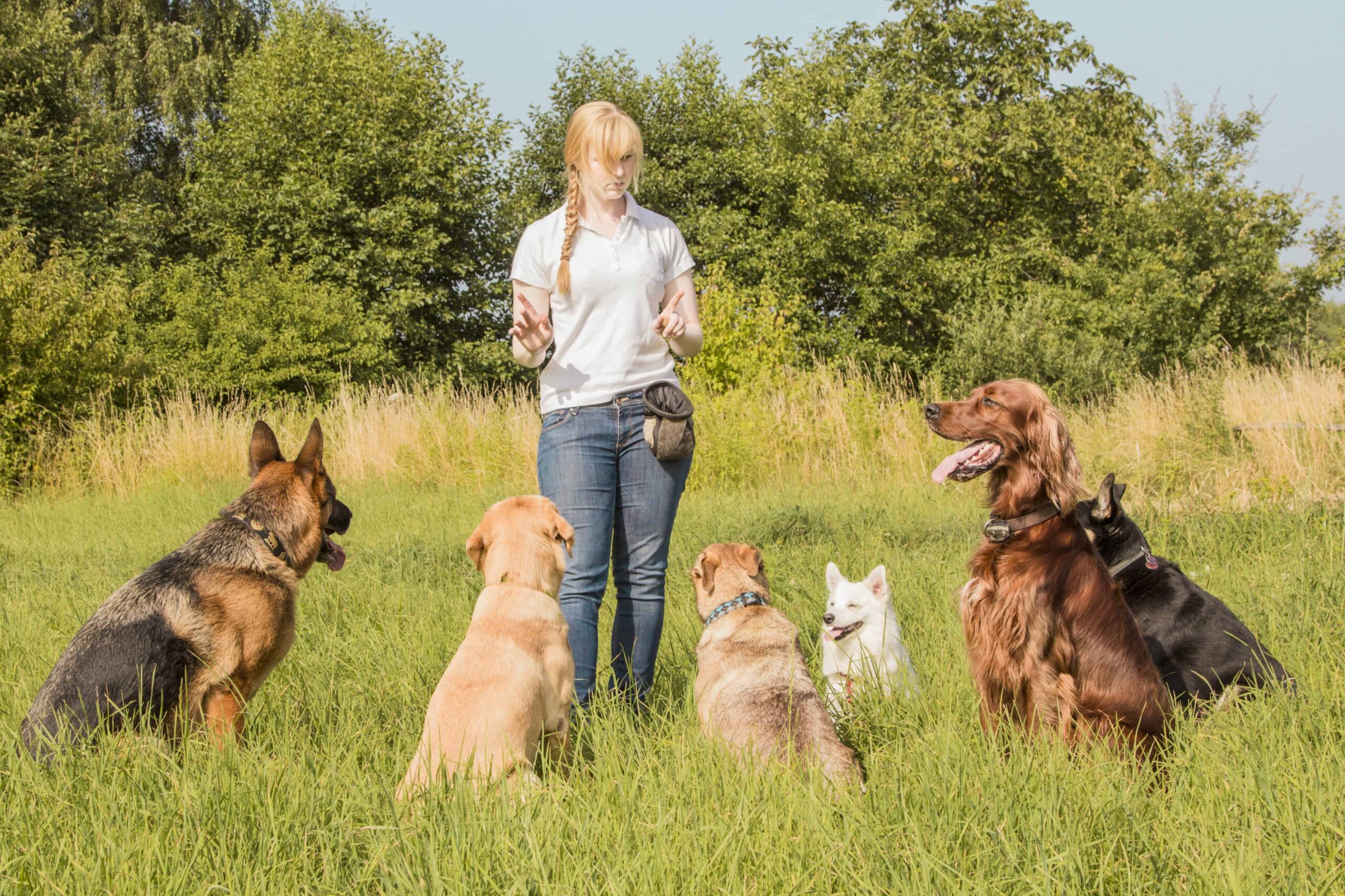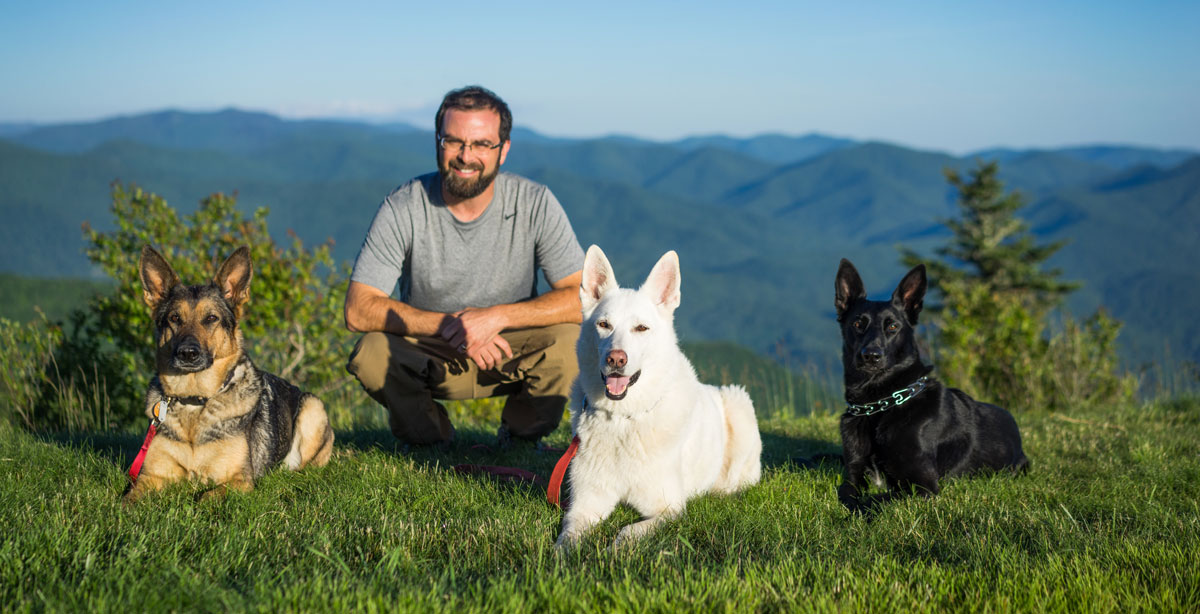The Benefits of Early Dog Training for a Mannerly Family pet
Important Tips for Effective Dog Training: An Overview for Pet Dog Owners
Efficient dog training is a complex process that calls for a calculated approach customized to both the animal's personality and the owner's objectives. Understanding how to navigate these obstacles can substantially improve the training experience, eventually changing the connection in between proprietor and canine.
Recognizing Dog Actions
Understanding dog habits is necessary for reliable training and fostering a harmonious connection between dogs and their proprietors. dog training. Pets connect primarily through body language, vocalizations, and actions, making it important for owners to translate these signals precisely.

Socializing plays a substantial function in dog behavior; exposure to numerous atmospheres, individuals, and various other pets can considerably influence a pet dog's character. Moreover, aspects such as type characteristics and private personality need to assist training techniques, as some breeds may have specific behavioral characteristics that demand customized strategies. By comprehending these aspects, proprietors can produce an encouraging setting that urges favorable behavior, leading to successful training outcomes and a deeper bond with their animals.
Developing Constant Commands
Effective communication with your canine starts with establishing constant commands. This fundamental element of training is critical for cultivating understanding in between you and your pet. Consistency in the commands you utilize makes sure that your pet can dependably associate details words or expressions with the desired actions.
When selecting commands, pick clear, distinctive words that are simple to state and set apart from each other. Stay clear of making use of similar-sounding commands that may puzzle your canine. As an example, making use of "sit" and "stay" is ideal, yet "rest" and "struck" might cause misconceptions.
Additionally, maintain the same tone and volume for each and every command. Dogs are delicate to vocal signs, so differing your tone can create confusion.
It is just as essential to ensure that all member of the family are on the same page relating to the commands utilized. A united front in command use will avoid combined signals and enhance the learning process.
Favorable Support Techniques
The power of favorable reinforcement in pet dog training hinges on its capability to motivate desired actions through rewards and appreciation. This strategy is grounded in the concept that habits complied with by favorable outcomes are much more most likely to be duplicated. By including positive support into your training program, you can effectively shape your dog's actions in a positive way.
To implement favorable reinforcement, it's important to recognize what motivates your dog, whether it be deals with, toys, or verbal appreciation. When your canine performs a preferred action, such as remaining on command, promptly award them with a treat or affection. This association between the command and the positive outcome enhances their understanding.
It's crucial to timing the rewards properly; visite site providing the reinforcement within seconds of the desired actions assists your canine make the link (dog training). Additionally, consistency is vital-- make sure that all relative make use of the very same commands and reward systems to prevent complication

Gradually, you can minimize the regularity of treats as your canine learns the actions, transitioning to commend or intermittent incentives. This approach not just promotes a solid bond in between you and your canine but additionally promotes a favorable knowing environment, making educating a delightful experience for both.
Socialization and Communication
Consistently subjecting your pet dog to a selection of settings, people, and various other pets is important for their social development. Socializing ought to start early, ideally during the vital window of 3 to 14 weeks, when young puppies are most receptive to new experiences. Nonetheless, older pets can additionally take advantage of recurring socializing initiatives.
Present your pet to various setups, such as parks, pet-friendly shops, and metropolitan locations. This exposure aids them adapt to numerous stimuli, minimizing stress and anxiety and worry reactions. Encourage favorable communications with various other pet dogs and people, making certain that these encounters are regulated and risk-free to cultivate self-confidence.
Utilize organized playdates with courteous canines, as this can enhance your pet's social skills and educate them suitable actions. Obedience courses and training sessions also give outstanding possibilities for socialization, permitting your canine to communicate with others in a monitored setting.
Monitor dog training your canine's body language throughout communications, as this will certainly help you gauge their comfort degree. Progressively enhance exposure to more tough situations while making sure that each experience declares. A well-socialized pet dog is more likely to show balanced habits, making them a joy to have in any type of setup.
Addressing Common Training Difficulties
Every pet dog proprietor will come across training obstacles at some time, no matter their pet dog's age or socialization level. Determining common problems such as stubbornness, diversions, and fearfulness can aid in creating reliable approaches for improvement.

Progressively present distractions as the canine comes to be extra competent in commands. Short, frequent training sessions are likewise reliable in maintaining focus.
Fearfulness can prevent a dog's discovering process. Progressive desensitization to the resource of anxiety, coupled with positive reinforcement, can help reduce anxiety. Patience is important; never ever compel a pet dog into a scenario that creates distress, as this may intensify the problem.
Inevitably, understanding and addressing these usual challenges with an organized technique will certainly cultivate an extra efficient training experience, strengthening the bond in between pet and owner while promoting reliable knowing.
Verdict
In summary, effective pet dog training relies upon a thorough understanding of canine habits, the establishment of constant commands, and the application of favorable reinforcement methods. Socialization plays a crucial role in establishing well-adjusted pets, while resolving usual training difficulties requires patience and adaptability. By carrying out these important methods, pet owners can promote a strong bond with their pet dogs and advertise desirable behaviors, eventually resulting in a harmonious connection between human beings and their canine buddies.
Understanding canine behavior is vital for efficient training and cultivating a harmonious partnership in between dogs and their proprietors.Socialization plays a substantial duty in canine actions; exposure to numerous atmospheres, Full Report individuals, and other animals can substantially influence a canine's character.The power of favorable support in canine training exists in its ability to urge preferred habits with benefits and praise. By incorporating positive support right into your training routine, you can efficiently shape your pet dog's habits in a useful fashion.
In summary, successful pet dog training depends on an extensive understanding of canine habits, the facility of consistent commands, and the application of positive support techniques.